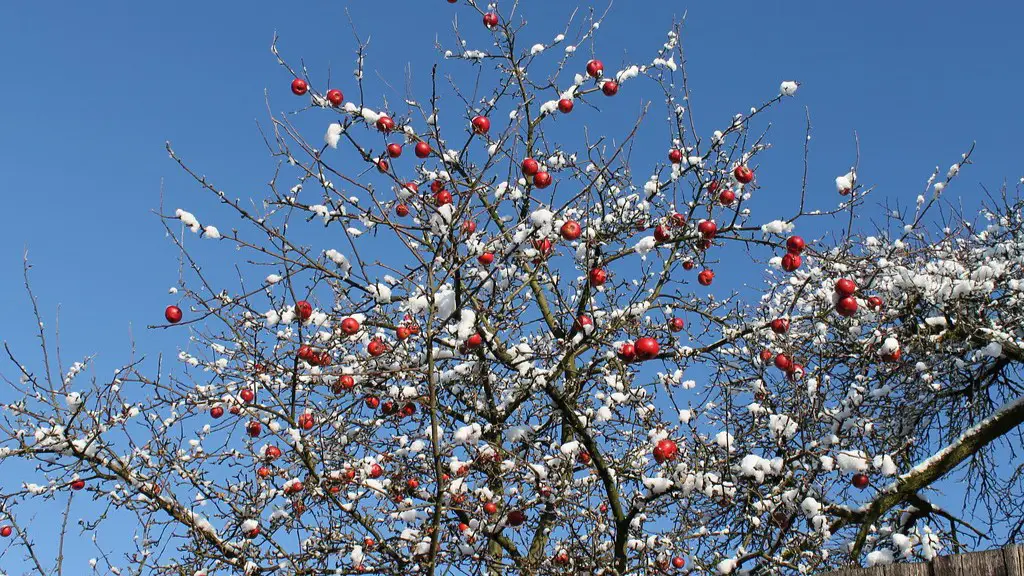Palmetto: a Unique Palm
Palm trees come in a variety of shapes and sizes, providing a rich ecosystem of animal life in forests, jungles, and temperate climes. Among palm trees, the palmetto stands out due to its distinct fan-like leaves which give it an iconic profile. It’s hardy nature, ability to regenerate quickly and resistance to disease makes it an appealing choice for landscaping and horticulture.
The palmetto, or Sabal palmetto as it is technically known, is a type of palm tree with its own unique characteristics. Its fan-like leaves—or fronds—are native to the southeastern United States, ranging from southern Georgia all the way to Texas. It is the official state tree of both Florida and South Carolina, and its leaves can be seen in many landscapes throughout the region. It is a hardy tree that can survive in a variety of conditions, including sandy soils and brackish waters.
The palmetto can grow anywhere from 30-60 feet in height, and it has a thick trunk which is often used for lumber and other wood products. It also has an underground root system, offering a rich soil to support plant and animal life. Its crown—or the area above the trunk—can be 8-9feet in diameter, providing ample shade.
The palmetto is also resistant to many types of disease, making it a popular choice for landscapers and horticulturalists. It is known for its ability to regenerate quickly following fire or other natural occurrences which can damage or destroy other types of trees. The fronds can also be trimmed in a variety of ways, providing an array of aesthetic possibilities for landscaping.
Despite its distinct shape and resilience, it is important to note that the palmetto is not an ideal tree for every situation. As it grows in height, its crown does not increase in size, making it difficult to use for shade or wind protection. Its leaves are also sharp and spiky, which can be hazardous or unpleasant to pets or children. Additionally, its trunk is not as strong as other trees, making it more susceptible to strong winds.
Experts warn that the palmetto can be invasive and can spread quickly, if not monitored closely. It is important to be aware of local regulations and restrictions before planting a palmetto. Additionally, experts recommend pruning the fronds regularly to avoid an overgrowth of foliage. Because of its resiliency, it is important to be careful when attempting to remove the tree to avoid spreading its roots or allowing it to grow back.
The palmetto palm tree is an iconic and useful piece of southeastern landscapes. With its distinct shape and hardy nature, it has a variety of uses for landscapers and horticultureists. While it may not be the ideal tree for every situation, its quick growth and resistance to disease make it an attractive option for many rural and urban spaces.
Uses of Palmetto
The unique fan-shaped leaves of the palmetto and its hardy nature make it an attractive option for landscapers and homeowners looking for a unique and resilient tree. Palmetto fronds can be trimmed to create a variety of shapes and sizes, providing aesthetic possibilities. It can provide a lush backdrop for outdoor areas, or it can be used as a natural fence to provide privacy.
Palmetto is also an excellent choice for homes and businesses in coastal areas due to its resistance to saltwater and strong winds. The tree is often used in erosion control projects and other projects in wetlands and coastal regions. In addition, the sap from the palmetto can be used to create natural fertilizers, shampoos, and soaps, making it an invaluable resource for local communities.
The palmetto is also used for a variety of medicinal purposes due to its anti-inflammatory, anti-bacterial and diuretic properties. The leaves of the palmetto can be crushed and brewed into a tea which can help with digestive and muscle problems, as well as a host of other conditions. Palmetto can also be taken as a supplement to promote healthy urinary flow, prostate health and increased energy levels.
Dangers of Palmetto
While the palmetto is a resilient tree that can survive in a variety of climates and conditions, it is important to note that it can also be invasive. If it’s not monitored properly, the palmetto can spread quickly, disrupting local ecosystems and crowding out other trees and plants. Its sharp leaves can also be a hazard to pets and children, so it is important to avoid planting the palmetto close to residential areas or public spaces.
In some areas, it may also be illegal to plant a palmetto due to local regulations or restrictions. It is important to research the local laws before planting or trimming a palmetto tree, to avoid any potential fines or penalties.
Hot to Plant Palmetto
The palmetto is relatively easy to plant and maintain, provided it is in the right area. It should be given plenty of sunlight and access to water. If planting in wet areas or areas with high salinity, extra precautions should be taken to ensure the tree receives adequate amounts of nutrients and minerals. Proper drainage and soil fertility are important in these areas.
When planting a palmetto, be sure to plant it in an area that has adequate space. As the palmetto grows, its root system will expand and can easily uproot other plants or roots. Stake the palm and ensure it is firmly planted in the soil before backfilling to help stabilize it as it grows.
Pruning Palmetto
It is important to regularly prune the palmetto to ensure an attractive shape, as well as prevent an overgrowth of the foliage. Pruning the palmetto can also help preserve its health and vitality, as the removed fronds can be used to fertilize the soil.
When pruning the palmetto, it is important to remove the dead or diseased fronds first. Be sure to use clean and sharp pruning shears, and avoid tearing the fronds which can cause damage to the tree. Once the dead fronds have been removed, carefully trim the remaining fronds to maintain a balanced crown shape.
Health Benefits of Palmetto
The palmetto is known for its anti-inflammatory and anti-bacterial properties, making it an ideal choice for promoting health and wellness. Its leaves can be crushed and brewed into a tea which can help to reduce muscle soreness, improve digestion, and promote healthy urinary flow. It is also believed to help boost energy levels, reduce stress and anxiety, and increase libido.
In addition to its medicinal properties, the palmetto is a valuable addition to any landscape. It provides a lush backdrop, and its fan-shaped leaves provide a unique aesthetic. With its hardy nature and resistance to disease, it is an invaluable part of the southeastern landscape.
Pests and Diseases
The palmetto is relatively resistant to pests and diseases, but there are still some that can have an effect on the tree. The main disease to watch out for is Lethal Yellowing, which can cause the leaves to discolor and eventually die. This can be treated with a fungicide, however it is important to identify the disease early on.
Pests such as caterpillars, mites, and other bugs can also cause damage to the tree. These can be treated with insecticides, but it is important to apply them properly to ensure maximum efficiency.
Conclusion
The palmetto is an iconic palm tree which is native to the southeastern United States. Known for its fan-like leaves and hardy nature, it is a popular choice for landscapers and homeowners looking to add a unique touch to their landscape. The palmetto can also provide a host of health benefits, and its sap can be used to create natural fertilizers, shampoos and soaps. It is important to be aware of the potential dangers of the palmetto and to take precautions when planting and pruning the tree. With proper care and maintenance, the palmetto can provide a lush backdrop to any landscape.


